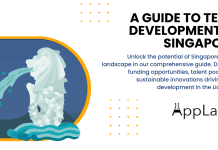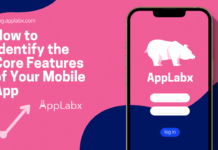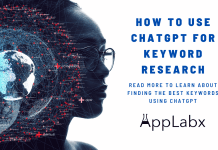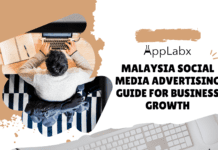Key Takeaways
- Use GEO strategies to create semantically structured, entity-rich, and AI-readable content optimized for Google AI Overviews (SGE).
- Incorporate multimodal elements like videos, charts, and schema markup to increase content extractability and SGE citation potential.
- Continuously monitor and update your content to align with evolving AI algorithms, user intent shifts, and real-time search behaviors.
The digital search landscape is undergoing a fundamental transformation. As Google steadily rolls out its Search Generative Experience (SGE)—a new AI-powered feature that provides AI-generated overviews directly in search results—content creators, marketers, and SEOs are facing an urgent need to rethink their optimization strategies. Traditional SEO, which primarily focused on keyword placement, backlinks, and technical health, is no longer sufficient on its own. To maintain visibility and traffic in this evolving environment, brands must now embrace Generative Engine Optimization (GEO)—a forward-thinking framework designed specifically to align content with the needs of AI-driven search engines.

Google’s AI Overviews, also known as SGE, are designed to provide users with quick, accurate, and conversational summaries of information directly within the search interface. These AI-generated snippets often combine insights from multiple sources into a single, cohesive response. While this elevates the user experience by reducing friction and eliminating the need to click on multiple links, it simultaneously disrupts the conventional flow of organic traffic. Websites that once dominated traditional search engine result pages (SERPs) with strong SEO tactics may now find themselves bypassed unless they adapt to this new model. This is where GEO comes in.
GEO, or Generative Engine Optimization, is not just a trend; it’s the next generation of SEO. It shifts the focus from merely ranking on search engines to being selected, synthesized, and cited by AI systems in their responses. Optimizing for GEO means creating content that is semantically rich, factually accurate, well-structured, and directly aligned with user intent—qualities that AI models like those behind Google SGE prioritize when generating responses. GEO also considers how AI understands and processes text, images, and context across the web, encouraging content creators to design information that is machine-readable, modular, and multidimensional.
The convergence of SGE and GEO marks a turning point in digital marketing. As AI-generated summaries become more prevalent in SERPs, zero-click search behavior is likely to rise. This means that fewer users will click through to traditional websites, opting instead to consume the information displayed directly within AI-generated overviews. For content creators, this presents both a challenge and an opportunity. The challenge lies in navigating the complexities of AI comprehension and generative logic. The opportunity, however, is in creating content so relevant, authoritative, and well-structured that it is consistently featured in these AI summaries—essentially turning your content into the source of truth for millions of search queries.
This blog will provide a comprehensive guide to optimizing your content for Google AI Overviews using GEO principles. From understanding how SGE chooses content, to implementing actionable on-page strategies and leveraging structured data, every section will equip you with insights and techniques to thrive in this AI-first search ecosystem. Whether you’re an experienced SEO professional or a content strategist looking to future-proof your digital presence, this guide is designed to help you make the shift from outdated optimization tactics to modern, AI-aligned methodologies.
In the era of AI-powered search, visibility is no longer just about ranking—it’s about being recognized and synthesized by intelligent systems. Embracing GEO is the key to staying relevant, discoverable, and impactful as Google redefines how the world searches for information.
But, before we venture further, we like to share who we are and what we do.
About AppLabx
From developing a solid marketing plan to creating compelling content, optimizing for search engines, leveraging social media, and utilizing paid advertising, AppLabx offers a comprehensive suite of digital marketing services designed to drive growth and profitability for your business.
At AppLabx, we understand that no two businesses are alike. That’s why we take a personalized approach to every project, working closely with our clients to understand their unique needs and goals, and developing customized strategies to help them achieve success.
If you need a digital consultation, then send in an inquiry here.
How to Optimize Your Content for Google AI Overviews (SGE) with GEO Principles
- What Are Google AI Overviews (SGE)?
- Understanding GEO: The Foundation for AI-Era Content Optimization
- How SGE Selects and Summarizes Web Content
- Key GEO Strategies to Optimize for Google AI Overviews
- Create High-Authority, Original Content
- Optimize for Multimodal Understanding
- Monitor Performance and Update Frequently
- Future Trends: SGE, GEO, and the Evolution of Search
1. What Are Google AI Overviews (SGE)?
Google’s Search Generative Experience (SGE) represents a major evolution in how search engines process, interpret, and present information. It blends AI-powered summarization with traditional search results to deliver concise, context-rich responses. Understanding how it works is crucial for content creators and SEOs who want to remain visible in this new paradigm.
Understanding the Core of Google AI Overviews
- Definition:
Google AI Overviews (SGE) are AI-generated summaries that appear at the top of the search engine results page (SERP), synthesizing information from multiple high-quality web sources into a single, conversational response. - Technology Behind It:
- Powered by generative AI models such as Gemini (formerly Bard) and DeepMind technologies.
- Combines natural language processing (NLP) with search index crawling to produce real-time, query-specific insights.
- Uses Reinforcement Learning from Human Feedback (RLHF) to improve response accuracy over time.
- Main Objectives:
- Deliver faster, more complete answers to complex queries.
- Reduce the need for multiple clicks and fragmented information gathering.
- Prioritize user-centric relevance, not just page rank.
How Google AI Overviews Differ from Traditional Search Results
| Feature | Traditional SERP | Google AI Overviews (SGE) |
|---|---|---|
| Information Source | Individual web pages | Synthesized from multiple web sources |
| Presentation Format | Link-based results | AI-generated paragraphs |
| Click Requirement | Clicks to access content | Zero-click summaries |
| Interaction Style | Static | Conversational, sometimes expandable |
| Ranking Factors | Backlinks, keywords, page speed | Relevance, context, authority, clarity |
| Citation Behavior | None or manual attribution | Cites multiple sources in real-time |
Key Characteristics of Google AI Overviews
- Multisource Summarization:
- Gathers and blends data from several top-ranking or authoritative pages.
- Creates a single unified answer that eliminates the need to visit multiple websites.
- Contextual Awareness:
- Understands search intent more deeply.
- Adapts the tone and content based on query complexity, user language, and location.
- Conversational Design:
- Responses are written in a human-like, easy-to-read tone.
- Sometimes include follow-up suggestions or question threads to deepen the search journey.
Real-World Examples of SGE in Action
Example 1: Health Query
- Query: “What are the symptoms of iron deficiency in women?”
- SGE Output:
- A short paragraph summarizing symptoms such as fatigue, pale skin, brittle nails, and dizziness.
- Cites multiple health sources like Mayo Clinic, Healthline, and NHS.
- Provides follow-up questions like “Can iron deficiency cause anxiety?”
Example 2: Product Comparison
- Query: “Best budget-friendly laptops for students in 2025”
- SGE Output:
- Summarized pros and cons of top picks such as Acer Aspire, Lenovo IdeaPad, and HP Pavilion.
- Highlights features like battery life, RAM, and pricing tiers.
- Links to product reviews and buying guides from trusted tech sites.
Types of Queries That Trigger AI Overviews
| Query Type | SGE Likelihood | Description |
|---|---|---|
| Complex informational queries | High | Questions with multiple parts or in-depth requirements |
| How-to queries | High | Step-by-step guides, tutorials, or workflows |
| Comparisons & recommendations | High | “Best”, “top”, or “vs.” searches often invoke SGE |
| Transactional queries | Medium | Often bypassed in favor of Shopping Ads, unless deeply informational |
| Local searches | Low to Medium | AI may defer to Maps and local pack features instead of summarizing locally |
| Navigational queries | Low | Brand searches typically skip AI overview to prioritize direct results |
Why SGE Matters for Marketers and SEOs
- Shift to Zero-Click Behavior:
- Users get the answer within the overview—reducing the need to visit a website.
- Brands must be cited in overviews to maintain visibility.
- Greater Emphasis on Content Quality:
- Google AI prefers content that is factual, well-structured, and user-intent aligned.
- Less focus on keyword stuffing; more focus on semantic relevance and contextual clarity.
- AI as the New Gatekeeper:
- Even top-ranking content may be excluded from summaries if it lacks trust signals or clarity.
- GEO strategies help align content with AI preferences, not just algorithmic ones.
Visualizing the New Search Experience
Traditional Search Flow vs. AI Overview Flow
A[User Types Search Query] --> B[Traditional SERP with Links]
B --> C[User Clicks Link]
C --> D[Reads Full Page]
A2[User Types Search Query] --> B2[AI Overview Summary]
B2 --> C2[Reads Directly in SERP]
C2 --> D2[Optional Click to Source]
- Takeaway: The path from query to information is now shorter and more AI-intermediated.
Conclusion: The SGE Paradigm Requires a Mindset Shift
To succeed in this new AI-driven search ecosystem, brands and marketers must evolve:
- Think beyond rankings and focus on content inclusion in AI-generated summaries.
- Embrace GEO principles—clarity, accuracy, authority, and structure.
- Create content not just for users or crawlers, but for AI synthesis engines.
The rest of this blog will break down how you can achieve this by leveraging Generative Engine Optimization to align perfectly with the SGE algorithm and its content selection criteria.
2. Understanding GEO: The Foundation for AI-Era Content Optimization
Generative Engine Optimization (GEO) is an advanced content strategy framework built specifically to help websites gain visibility in AI-powered search environments—especially within features like Google’s Search Generative Experience (SGE). GEO expands upon traditional SEO by focusing not only on ranking in search results, but also on ensuring content is recognized, interpreted, and cited by AI models in generative summaries.
What is Generative Engine Optimization (GEO)?
- Definition:
GEO is the practice of optimizing content to ensure its inclusion, synthesis, and citation in AI-generated responses across search engines. - Purpose:
- Go beyond keyword-based optimization
- Align content with how large language models (LLMs) parse, interpret, and synthesize information
- Help businesses gain visibility even in zero-click environments
- Key Attributes of GEO Content:
- Factually accurate
- Contextually rich
- Concisely structured
- Semantically aligned with intent
- Citable by AI models (clear authorship and references)
GEO vs. Traditional SEO: A Strategic Comparison
| Feature/Aspect | Traditional SEO | Generative Engine Optimization (GEO) |
|---|---|---|
| Goal | Rank higher in SERPs | Be included in AI-generated answers |
| Optimization Focus | Keywords, backlinks, metadata | Context, clarity, authority, semantics |
| Content Format | Long-form, keyword-rich | Modular, AI-readable, structured summaries |
| Technical Signals | Core Web Vitals, mobile UX | NLP markers, structured data, factual integrity |
| Success Metrics | CTR, ranking position | AI citation frequency, presence in AI overviews |
| Audience | Human readers and algorithms | Human readers and AI models simultaneously |
Core Principles of GEO Optimization
1. Semantic Clarity and Intent Matching
- Write content that aligns with user intent categories: informational, navigational, transactional
- Use latent semantic indexing (LSI) keywords and entity-based optimization
- Prioritize query-focused content structure
2. AI-Readable Formatting
- Use simple, well-structured headings (H2, H3) and scannable sections
- Bullet points, short paragraphs, and visual hierarchy
- Incorporate schema markup for FAQs, how-tos, products, and articles
3. Authority and Trust Signals
- Include author bios with credentials and expertise
- Link to and from credible, high-authority sources
- Ensure content is fact-checked and current
4. Modular Content Design
- Break content into standalone sections easily extractable by AI
- Enable reuse in AI summary blocks and conversational answers
- Use of definition boxes, checklists, and concise intros
5. Real-Time Relevance
- Update content to match evolving search trends
- Reference current events, updates, or studies with timestamps
- Maintain evergreen structure with real-time relevance
Examples of GEO-Friendly Content in Practice
Example 1: Travel Blog – “Best Time to Visit Japan”
- Instead of a lengthy narrative, use:
- Short intro summarizing best seasons
- Bullet-point breakdown by region (Tokyo, Kyoto, Hokkaido)
- Embedded FAQ: “Is cherry blossom season crowded?”
- Updated weather patterns linked to official sources
Example 2: Tech Comparison – “MacBook Air vs Dell XPS 13”
- Table format comparing specs
- Pros and cons section in bullet form
- Summarized verdict at top for AI synthesis
- Internal links to in-depth reviews
AI Relevance Matrix: What Makes Content GEO-Optimized
| GEO Content Attribute | Description | Relevance to AI Overviews |
|---|---|---|
| Answer Precision | Directly answers the query in the opening sentence | High |
| Source Attribution | Includes author name, references, credentials | High |
| Factual Data | Stats, dates, citations from trusted institutions | Very High |
| Summarizability | Modular sections that can stand alone | High |
| NLP Alignment | Uses structured data and semantic keywords | Medium to High |
| Originality | Non-duplicated insight or first-party data | High |
| UX Formatting | Readability, headings, tables, lists | Medium to High |
GEO-Driven Workflow for Content Creation
A[User Intent Research] --> B[Topic Clustering & Entity Mapping]
B --> C[Content Brief with GEO Elements]
C --> D[AI-Readable Content Formatting]
D --> E[Fact Validation & Source Attribution]
E --> F[Schema Markup & Internal Linking]
F --> G[Publish and Track AI Citations]
- GEO is not a one-time adjustment but an integrated, end-to-end strategy.
- Success depends on content development, technical structuring, and monitoring AI visibility.
Common Pitfalls to Avoid in GEO Content
- Over-optimization for keywords with no context
- Long, unstructured paragraphs that AI models cannot summarize
- Missing attribution or author information
- Using outdated facts, statistics, or broken links
- Lack of intent differentiation across similar pages
Conclusion: GEO Is the Bridge Between SEO and AI-Driven Search
GEO represents a necessary evolution for content creators and SEOs in an age where AI determines what content gets seen first. By focusing on semantic clarity, trust signals, structured formats, and modular design, brands can optimize their content not just for rankings, but for inclusion in the most visible and influential layer of Google’s AI Overviews.
As we move forward into a search landscape dominated by machine-generated responses, mastering GEO is no longer optional—it’s essential. The next sections will dive into how to apply these principles in real-time content workflows and specific GEO tactics that work for different content types and industries.
3. How SGE Selects and Summarizes Web Content
Understanding how Google’s Search Generative Experience (SGE) identifies, evaluates, and incorporates content into AI-generated overviews is critical for content creators aiming to gain and retain online visibility. Unlike traditional search algorithms that rely heavily on backlinks and keyword density, SGE leverages natural language understanding, semantic context, and multisource trust signals to generate synthesized responses.
This section breaks down how SGE selects content, the criteria it uses for summarization, and actionable strategies to increase the chances of inclusion.
The Content Selection Mechanism in SGE
1. Multisource Aggregation
- Google’s SGE doesn’t pull from a single page but aggregates multiple trustworthy sources.
- It looks for commonalities, consensus, and complementary details across web content.
2. Relevance to Query Intent
- SGE evaluates content not just for keywords, but for semantic alignment with user intent.
- Content is scored based on how well it answers the query holistically.
3. High-Fidelity Information
- AI models prioritize accurate, up-to-date, and well-sourced content.
- Preference is given to:
- Governmental, academic, and institutional sources
- Pages that cite primary data or firsthand experience
Key Factors Google SGE Uses to Summarize Content
| Selection Factor | Description | Importance Level |
|---|---|---|
| Intent Alignment | How well content matches the user’s search purpose | Very High |
| Topical Relevance | Direct connection between topic and subtopics covered | High |
| Authority & Trust | Content from credible, well-recognized sources | Very High |
| Clarity & Summarizability | Structured, scannable content that’s easy for AI to parse and condense | Very High |
| Citation Availability | Proper attribution, author profiles, and references | High |
| Factual Accuracy | Verified information supported by statistics or references | Very High |
| Recency of Information | How current the content is, particularly in fast-evolving topics | High |
The SGE Summarization Process: Step-by-Step
A[User Enters Query] --> B[SGE Interprets Intent with NLP]
B --> C[Searches Index for Relevant Documents]
C --> D[Filters Content Based on Trust & Accuracy]
D --> E[Extracts Key Sentences from Top Sources]
E --> F[Generates Summary Using LLMs (e.g. Gemini)]
F --> G[Displays Summary with Citations]
- The goal is not just accuracy, but usefulness and completeness.
- The summary is conversational, often accompanied by follow-up prompts.
SGE’s Selection Criteria in Real-World Examples
Example 1: “Is oat milk good for cholesterol?”
SGE Output:
- Summarized paragraph explaining the presence of beta-glucan in oats.
- Cites WebMD, Mayo Clinic, and a peer-reviewed journal.
- Mentions benefits, caveats, and possible alternatives.
What Got Selected:
- Pages that explained mechanisms (beta-glucan’s effect on LDL)
- Used scientific backing or cited studies
- Were updated recently with 2023 or 2024 references
AI-Weighted Relevance Matrix for Content Summarization
| Content Attribute | Example | AI Weight |
|---|---|---|
| Clear Definition Early On | “Oat milk contains beta-glucan, a fiber known to lower LDL.” | High |
| Answer Framed for AI Use | Short, focused sections (50–150 words) with key facts | High |
| Source Link Embedded | “According to Mayo Clinic…” with outbound reference | Medium |
| Multi-intent Coverage | Includes benefits, risks, and comparisons | High |
| No Fluff or Filler | Excludes personal anecdotes or excessive opinions | Very High |
| Technical but Readable | Uses correct terminology, explained simply | Medium |
SGE-Friendly Content Structure Blueprint
To maximize inclusion in AI Overviews, consider the following ideal content layout:
| Section Name | Description | Purpose |
|---|---|---|
| Intro Paragraph | Concise definition or direct answer to the query | Supports direct extraction |
| Key Subheadings (H2) | Each addressing a component of the query | Helps modular AI parsing |
| Bulleted Lists | Key takeaways, pros and cons, or step-by-step guides | AI can lift structured content |
| Stat Blocks | “As of 2025, X% of Y occurs…” | Enhances credibility |
| Author/Review Section | Bio, credentials, and date of last update | Trust and verification signal |
| FAQs or Schema | Intent-based structured questions and answers | Supports structured summarizing |
How Content Formatting Influences AI Summarization
Key Formatting Tactics:
- Use semantic HTML tags like
<article>,<section>,<aside>,<summary> - Ensure headers clearly segment intent (e.g., “How Does It Work?”, “What Are the Risks?”)
- Include schema markup like:
FAQPageHowToArticleReview
Visual Summary Example: How Formatting Affects Summarization
| Format Style | AI Summary Extraction Potential |
|---|---|
| Dense Paragraphs | Low |
| Clear Subheadings | High |
| Bulleted Takeaways | Very High |
| Tables with Comparisons | High |
| Long Unsegmented Pages | Low |
Citations in SGE: How and Why Your Content Gets Credited
- Google cites sources either:
- Inline (e.g., “According to Healthline…”)
- Below the summary, in a carousel of cited pages
- Criteria to be cited:
- Structured and accessible content
- Clear authorship and source credibility
- Consistent terminology with high factual overlap
Technical Signals That Help SGE Trust Your Content
- HTTPS Security and mobile responsiveness
- Core Web Vitals optimization (especially Largest Contentful Paint and CLS)
- Canonical URLs for clarity in content duplication
- Open Graph and Twitter Card metadata for clarity and cross-platform AI use
- Use of alt-text on images, especially diagrams and infographics
Conclusion: SGE Summarization Is About Relevance, Authority, and Structure
SGE is not a ranking system; it is a relevance engine powered by AI. To be selected, your content must deliver precise, structured, and trustworthy information in a format that LLMs can easily digest and summarize.
By aligning your content with these SGE content selection signals—through semantic clarity, modular formatting, and authority markers—you significantly increase the likelihood of your content being surfaced, cited, and summarized in Google’s AI Overviews.
The following section will explore GEO-based tactics you can apply today to elevate your content’s readiness for inclusion in SGE outputs.
4. Key GEO Strategies to Optimize for Google AI Overviews
To succeed in the era of Google AI Overviews (SGE), brands and content creators must go beyond conventional SEO. The goal is no longer just ranking at the top of SERPs—it’s about being cited, summarized, and synthesized by AI systems that generate answers directly in search. This requires mastering Generative Engine Optimization (GEO)—a framework designed to make content AI-friendly, semantically rich, and contextually aligned.
This section offers a comprehensive breakdown of proven GEO strategies, supported by examples, comparison tables, and actionable matrices to help ensure your content stands out in Google’s AI-driven summaries.
1. Prioritize E-E-A-T to Build Trustworthiness
E-E-A-T stands for Experience, Expertise, Authoritativeness, and Trustworthiness—core evaluation principles used by both Google’s ranking systems and SGE content selectors.
Key Implementation Strategies:
- Display author credentials, certifications, or first-hand experience.
- Include author bios with links to professional profiles (LinkedIn, institutional pages).
- Add date of publication and last updated info for freshness.
- Cite reputable sources (e.g., medical journals, industry reports).
Example:
- A finance article explaining “how compound interest works” with examples from a certified financial advisor is more likely to be cited in an SGE overview than a generic blog post.
Trust Signal Optimization Matrix:
| Element | Strategy | Importance to SGE |
|---|---|---|
| Author Bio | Add credentials, links to profiles | High |
| Third-party Citations | Reference expert or academic sources | High |
| Real-world Experience | Include case studies, testimonials, or examples | Medium |
| Updated Timestamp | Keep pages current with relevant data | High |
2. Answer Intent-Centric Queries with Clarity
SGE selects content that directly answers the user’s query in a concise, authoritative manner. GEO content must be intent-aware and immediately valuable.
Optimization Techniques:
- Use summary-style paragraphs at the top of each section.
- Include direct answers within the first 2–3 lines of content.
- Use subheadings that reflect search intent phrases.
Types of Search Intent & GEO Alignment:
| Intent Type | GEO Strategy | Example Query |
|---|---|---|
| Informational | Provide definitions, how-tos, explainer lists | “What is a zero-trust network?” |
| Transactional | Offer comparisons, features, pricing tables | “Best CRM software for startups 2025” |
| Navigational | Include brand overviews, features, or support details | “HubSpot pricing explained” |
| Commercial/Research | Include pros/cons, user reviews, decision guides | “iPhone 15 vs Samsung S25 comparison” |
3. Structure Content for Summarization and Extraction
Generative models like Google’s SGE prefer structured, modular, and logically organized content that can be easily extracted and reassembled into summaries.
Key Structuring Techniques:
- Use H2 and H3 headings with keyword-aligned phrases.
- Break complex concepts into bulleted or numbered lists.
- Include tables for comparisons, timelines, or features.
- Add summary boxes or TL;DR sections at the beginning.
Example:
Instead of a paragraph about cloud storage options, use:
### Best Cloud Storage Providers (2025)
| Provider | Free Storage | Paid Plan Starts | Notable Feature |
|-------------|--------------|------------------|----------------------------|
| Google One | 15 GB | $1.99/month | Integration with Google Workspace |
| Dropbox | 2 GB | $9.99/month | Smart Sync functionality |
| iCloud | 5 GB | $0.99/month | Seamless with Apple devices|
Content Structure Optimization Matrix:
| Format Element | Purpose | SGE Extraction Potential |
|---|---|---|
| Short Paragraphs | Improves summarizability | High |
| Tables & Matrices | Provides clear comparisons | Very High |
| Bulleted Lists | Simplifies complex info | High |
| Headings/Subheadings | Helps AI interpret context | Very High |
4. Use Structured Data and Semantic Markup
Structured data helps search engines—and AI systems—understand context and hierarchy. GEO content enhanced with schema markup is more discoverable and machine-readable.
Recommended Schema Types:
Article– for blog posts, newsFAQPage– for question-answer contentHowTo– for step-by-step guidesProduct– for reviews, pricingReview– to mark testimonials and ratings
JSON-LD Example:
{
"@context": "https://schema.org",
"@type": "FAQPage",
"mainEntity": [{
"@type": "Question",
"name": "How does compound interest work?",
"acceptedAnswer": {
"@type": "Answer",
"text": "Compound interest accrues on both the initial principal and the accumulated interest, growing faster over time."
}
}]
}
Markup Benefits Table:
| Markup Type | Use Case | SGE Visibility Impact |
|---|---|---|
| FAQPage | Lists of questions/answers | High |
| HowTo | Step-by-step guides | High |
| Article | General blog or editorial | Medium |
| Product | Item descriptions with ratings | High |
5. Integrate Primary and Secondary Keywords Naturally
Keyword stuffing is no longer effective. Instead, SGE seeks contextual keyword usage and semantic depth.
Best Practices:
- Map keywords to topics and subtopics, not just single phrases.
- Use LSI keywords and entity mentions for depth.
- Incorporate keywords into:
- Subheadings
- Alt-texts
- Meta descriptions
- First and last 100 words of the content
Example:
For the keyword “best CRM tools for small businesses”:
- Related terms: automation, lead tracking, customer segmentation, pipeline management
Semantic Optimization Table:
| Keyword Type | Strategy | Tool Suggestions |
|---|---|---|
| Primary Keywords | Include in H1, H2, meta, intro | Ahrefs, SEMrush |
| Secondary Keywords | Disperse across subtopics | SurferSEO, Clearscope |
| Semantic Entities | Use throughout with intent alignment | Google’s NLP API |
6. Provide Factual, Original, and Cite-Worthy Content
AI models value truthful, unique, and well-sourced content. GEO strategies must focus on offering insights not found elsewhere.
How to Build Authoritative Content:
- Include first-party data, such as surveys or analytics.
- Reference peer-reviewed studies or white papers.
- Use charts, infographics, and custom visuals to support claims.
Originality Score Matrix:
| Content Type | Originality Factor | SGE Preference Level |
|---|---|---|
| Opinion Piece | Medium (low factual grounding) | Low |
| Case Study | High (unique data & insight) | Very High |
| Industry Report | Very High (proprietary info) | Very High |
| Aggregated Summary | Low (duplicated insights) | Low |
7. Optimize for AI Interpretation and Modularity
To be favored by SGE, content must be machine-parsable and sectioned into self-contained modules that can be lifted without losing context.
AI-Friendly Content Principles:
- One topic per section or paragraph
- Use clear headings with topic-aligned phrasing
- Include transitions and mini summaries after each section
Modular Content Layout Blueprint:
A[Intro: Direct Answer] --> B[H2: Key Concept]
B --> C[H3: Subpoint 1]
B --> D[H3: Subpoint 2]
C --> E[Bullet List]
D --> F[Table or Visual]
- Each node in the diagram above can be extracted independently and still hold meaning—ideal for AI summaries.
Conclusion: GEO Strategy Is the New Frontier for Search Visibility
Optimizing for SGE requires more than tweaking metadata or building links—it demands an entirely new way of structuring and delivering content. With a solid foundation in Generative Engine Optimization, content becomes not just discoverable, but actionably useful to AI systems shaping the future of search.
By implementing these strategies—E-E-A-T, structured formatting, schema markup, intent alignment, semantic optimization, and factual originality—you dramatically improve your content’s ability to be surfaced and cited in AI-generated summaries across Google.
5. Create High-Authority, Original Content
In the age of Google AI Overviews (SGE), creating high-authority, original content is not optional—it is foundational. SGE prioritizes content that demonstrates real expertise, firsthand knowledge, and unique value over repetitive or regurgitated material. For your content to be included and cited in AI-generated summaries, it must stand out as both trustworthy and novel in the eyes of machine learning models.
This section will guide you through advanced strategies to build content that AI trusts, users value, and SGE surfaces.
What Makes Content “High-Authority” in the SGE Era?
Key Characteristics of High-Authority Content:
- Written or reviewed by subject matter experts (SMEs)
- Cites credible primary sources and peer-reviewed materials
- Contains original research, case studies, or first-party data
- Maintains a neutral, fact-based tone with clear attribution
- Is regularly updated to reflect the latest developments
Examples of High-Authority Pages:
- A cybersecurity firm’s original report on ransomware trends
- A doctor-reviewed article on heart disease risk factors including citations from PubMed
- A SaaS company publishing user research and feature performance data
Comparison Matrix: High vs. Low Authority Content
| Feature | High-Authority Content | Low-Authority Content |
|---|---|---|
| Authorship | Written/reviewed by qualified experts | Generic or anonymous authorship |
| Source Citation | Cites academic, government, or trusted orgs | Links to blogs, forums, or no sources |
| Content Depth | In-depth insights, actionable conclusions | Surface-level info, filler text |
| Originality | Unique research, firsthand perspectives | Rewrites of existing material |
| Update Frequency | Updated regularly with time-stamps | Static or outdated content |
Why Originality Matters More Than Ever
AI models like Gemini and SGE’s LLMs are trained to detect duplication, redundancy, and content spinning. Content that doesn’t add new value is often ignored or penalized in AI-generated overviews.
How AI Detects Originality:
- NLP engines cross-reference factual claims and phrasing
- Looks for non-matching semantic fingerprints across known documents
- Identifies data uniqueness, custom visuals, and firsthand context
Originality Markers Recognized by AI:
- New statistics or survey results
- Case-specific analysis or commentary
- Custom diagrams, flowcharts, or infographics
- Quotes or interviews from real experts
Originality Evaluation Matrix
| Content Element | Originality Score | AI Summary Suitability |
|---|---|---|
| Custom Survey Data | Very High | Very Likely |
| Proprietary Visuals | High | High |
| Quoted Expert Interview | High | High |
| Curated Info Rewritten | Low | Low |
| AI-Generated Article | Medium | Unpredictable |
Actionable Strategies to Boost Authority and Originality
1. Incorporate First-Party Data and Proprietary Insights
- Publish findings from:
- Customer feedback analysis
- Internal usage metrics
- Experimental product testing
- Industry surveys you conducted
Example:
A SaaS company could create a blog post titled “How Our Users Reduced Churn by 32% in 6 Months” featuring screenshots, user cohort analysis, and retention strategies.
2. Add Expert Commentary or Interview Quotes
- Feature insights from:
- Company leaders
- Academic researchers
- Industry consultants
- Use Q&A or inline quotes with name, title, and credentials
3. Use Research-Backed Statistics and Reference Primary Sources
- Link directly to:
- Academic journals (e.g., JSTOR, PubMed)
- Official datasets (e.g., World Bank, OECD)
- Government reports (e.g., U.S. Census, UK Gov)
4. Highlight Experience-Based Opinions with Disclosure
- Label sections like:
- “Our Take”
- “Lessons Learned from 5+ Years in X”
- Make it clear when insights are based on real-world applications
5. Refresh and Expand Existing Evergreen Pages
- Revisit high-performing content and:
- Add new stats from the past 6–12 months
- Include updated citations
- Expand with new subtopics and visuals
Visual Blueprint: High-Authority Content Layout
A[Title: Clear, Intent-Based] --> B[Intro: TL;DR Summary]
B --> C[H2: Expert Explanation with Source Links]
C --> D[Custom Chart or Case Study]
D --> E[H2: In-Depth Breakdown with Citations]
E --> F[H2: Expert Quote or Industry Insight]
F --> G[H2: Actionable Recommendations]
G --> H[Author Bio + References + Last Updated]
This modular format enhances:
- Summarizability by AI
- Trust signals
- User engagement
Tools to Support Authoritative and Original Content Development
| Tool/Platform | Use Case | Benefit |
|---|---|---|
| Statista | Access industry statistics | Adds data-backed authority |
| Surfer SEO | NLP entity suggestions for originality | Boosts semantic uniqueness |
| Google Scholar | Academic paper citations | Provides high-credibility source material |
| Canva/Visme | Create branded infographics | Enhances visual authority |
| Grammarly/Writer.com | Maintain tone consistency and citation style | Improves clarity and professionalism |
Case Example: Authority-Driven Content in SGE
Query: “What are the risks of intermittent fasting?”
SGE Output Includes:
- Direct quote from a Harvard Health article
- Summary of risks such as nutrient deficiency, hormonal imbalance
- Cites studies from NIH and Mayo Clinic
Why This Content Was Included:
- Authored by licensed medical professionals
- Contained citations from peer-reviewed journals
- Written in clear, modular sections with medically accurate terminology
Challenges to Avoid When Aiming for Authority and Originality
| Common Pitfall | Impact on SGE Inclusion |
|---|---|
| Publishing AI-written content only | May lack depth and trust markers |
| Over-reliance on secondary sources | Penalized for lack of unique value |
| Failing to cite sources | Reduces credibility and AI confidence |
| Outdated statistics or facts | Marked as stale content |
| No named author or credentials | Trust signals missing, excluded from SGE |
Conclusion: Content That Stands Out is Content That Leads
High-authority, original content is the cornerstone of visibility in AI Overviews. It goes beyond satisfying search algorithms; it feeds the information models that now control zero-click visibility. By establishing yourself as a source of truth, and not just an aggregator of existing opinions, you position your brand and content as AI-citable assets.
6. Optimize for Multimodal Understanding
As Google’s AI Overviews (SGE) evolve, so does their ability to process and synthesize multimodal content—a fusion of text, images, audio, video, charts, and structured data. Unlike traditional search, where ranking depended primarily on textual signals, SGE leverages large multimodal models (LMMs) to understand and cite content across multiple formats. This means that optimizing for multimodal understanding is now essential for visibility in AI-driven summaries.
This section explores strategic approaches to ensure your content is not only readable by humans but also interpretable, extractable, and referenceable by AI models analyzing rich media assets.
What Is Multimodal Understanding in the Context of SGE?
Definition:
Multimodal understanding refers to an AI model’s ability to interpret and connect meaning across various forms of data—text, visuals, audio, and structured inputs.
In SGE Context:
- SGE utilizes Google’s LMMs (e.g., Gemini) to analyze visual cues, audio narratives, and structured data alongside traditional text.
- Enables richer, more complete summaries by pulling data from multiple formats in one response.
Example:
A search for “how to brew pour-over coffee” may return:
- Textual instructions
- An embedded how-to video
- A labeled diagram showing equipment
- Bullet list of coffee grind sizes with icons
Why Multimodal Optimization Matters for GEO and SGE
Key Benefits:
- Increases content extractability and citation potential
- Enhances engagement metrics (time on page, scroll depth, interactions)
- Improves semantic clarity and intent satisfaction
- Strengthens trustworthiness signals (especially with labeled visuals and captions)
Comparison: Text-Only vs. Multimodal Pages
| Attribute | Text-Only Content | Multimodal-Optimized Content |
|---|---|---|
| SGE Inclusion Probability | Medium | High |
| User Engagement | Moderate | High |
| Visual Summary Suitability | Low | Very High |
| Semantic Coverage | Limited to written explanation | Broad across formats |
Multimodal Content Types SGE Recognizes and Extracts
| Content Type | Description | AI Extraction Priority |
|---|---|---|
| Infographics | Data-rich visuals with annotations | Very High |
| Diagrams | Process flows, mind maps, labeled visuals | High |
| Charts/Tables | Comparison or statistical summaries | Very High |
| How-to Videos | Step-by-step video walkthroughs | High |
| Audio Clips | Podcasts, interviews, narrated guides | Medium |
| Interactive Modules | Calculators, visual widgets | Medium |
Strategic Tactics to Optimize for Each Modality
1. Text + Image Integration
- Use descriptive alt-text that captures the function and context of the image.
- Add image captions with keywords and semantic relevance.
- Embed images adjacent to related text to strengthen contextual correlation.
Example:
In an article about different shoe soles:
- Include close-up images of each sole type.
- Caption: “Rubber outsole for enhanced grip and water resistance, commonly used in hiking shoes.”
2. Use AI-Readable Infographics and Diagrams
- Export as SVG or high-res PNG with selectable text (avoid flat image-only diagrams).
- Add long-form descriptions below the visual for screen readers and AI parsing.
- Include clear labeling, color contrast, and consistent visual hierarchy.
Infographic Optimization Checklist:
| Feature | Required? | Benefit for AI Interpretation |
|---|---|---|
| Labeled Data Points | Yes | Clear factual extraction |
| Text Overlay | Yes | NLP-friendly content reading |
| Alt-Text Description | Yes | Enhances accessibility + AI parsing |
| Embedded Keywords | Yes | Improves topic mapping |
3. Structure Video for Search and AI Summarization
- Upload videos to YouTube with:
- Time-stamped chapters
- Transcript files (SRT/VTT)
- Structured video schema markup
- Add text-based summaries below the video for quick interpretation.
- Use on-screen text or visual overlays to reinforce concepts.
Schema Sample for VideoObject:
{
"@context": "https://schema.org",
"@type": "VideoObject",
"name": "How to Setup a Home Wi-Fi Network",
"description": "Step-by-step video tutorial on configuring a home Wi-Fi router.",
"uploadDate": "2025-04-12",
"duration": "PT6M12S",
"thumbnailUrl": "https://example.com/video_thumbnail.jpg",
"contentUrl": "https://example.com/video.mp4",
"embedUrl": "https://youtube.com/watch?v=example"
}
4. Enhance Audio Content with Transcriptions and Metadata
- Always provide human-edited transcripts below podcasts or audio guides.
- Tag audio files with episode title, description, topic, and keywords.
- Use text snippets from the audio in the surrounding blog content to reinforce association.
Multimodal Optimization Framework for GEO Content
flowchart TD
A[Primary Text Content] --> B[Relevant Images with Alt-Text]
B --> C[Infographics + Captions]
C --> D[Embedded Videos with Transcripts]
D --> E[Audio Summaries + Full Transcripts]
E --> F[Structured Data (Schema Markup)]
- Every node above represents a multimodal anchor that enhances the content’s discoverability and AI-friendliness.
Multimodal Content Alignment Matrix
| Content Element | Human Benefit | AI Understanding Advantage |
|---|---|---|
| Textual Descriptions | Clarity of explanation | NLP processing and summarization |
| Annotated Visuals | Visual reinforcement | Contextual correlation for LMMs |
| Tables and Charts | Easy data comparison | Structured interpretation and citation |
| Video with Transcripts | Visual + auditory engagement | Direct quote extraction and relevance mapping |
| Audio with Summaries | On-the-go learning | Keyword mapping and topical reference |
Examples of Multimodal Excellence in Action
Query: “How to perform CPR on infants”
SGE Output Includes:
- Written step-by-step guide
- Labeled diagram showing hand placement
- Embedded YouTube video by Red Cross
- FAQs addressing compression rates and breathing
Why It Was Selected:
- Uses multiple modalities to reinforce understanding
- Cited sources: Red Cross, American Heart Association
- Structured in sections with clear headers, visuals, and schema
Best Practices for Multimodal GEO Optimization
- Integrate at least one non-text modality per 500–700 words of content.
- Ensure all visuals are accompanied by descriptive metadata.
- Use file naming conventions and alt-text with keywords (e.g.,
wifi-router-setup-diagram.png). - Add visual summaries or “Key Visual Takeaways” at the end of each content section.
- Leverage FAQ schemas and HowTo schemas around videos or diagrams to support rich snippets and SGE inclusion.
Challenges to Avoid
| Common Mistake | Impact on AI Understanding |
|---|---|
| Using flat images with no alt-text | Low accessibility and AI visibility |
| Missing transcripts for audio/video | Reduces AI parsing and SGE citation |
| Visuals without supporting context | Weakens semantic alignment |
| Overusing media without structure | Confuses content hierarchy |
| Ignoring structured data markup | Misses machine-readability opportunities |
Conclusion: Multimodal Content = Multichannel Visibility
SGE represents a paradigm shift in how search engines interpret and present content—no longer favoring just text but blending visual, audio, and interactive modalities. To be relevant in this new AI-powered search landscape, creators must build content that’s not only insightful but also structurally diverse and machine-friendly.
Multimodal optimization, when paired with GEO best practices, ensures your content is not only discoverable but also featured, summarized, and trusted by AI systems powering the next generation of search.
7. Monitor Performance and Update Frequently
Optimizing for Google AI Overviews (SGE) is not a one-time task—it requires a continuous loop of performance monitoring, data analysis, and content updates. With Google’s generative AI models rapidly evolving, stale or underperforming content is more likely to be ignored or demoted by SGE. By tracking key metrics, identifying content gaps, and refreshing your pages strategically, you increase the chances of being included and cited in AI-generated summaries consistently.
This section outlines a robust strategy for monitoring GEO performance and implementing regular content updates, backed by practical examples, KPIs, tools, and visual frameworks.
Why Continuous Monitoring Matters in the SGE Era
Core Reasons:
- SGE prioritizes fresh, high-performing, accurate content.
- AI-generated answers are influenced by real-time engagement signals.
- Content visibility fluctuates with algorithm updates and user behavior shifts.
- Pages not updated or optimized regularly risk being excluded from SGE summaries.
Example:
A digital marketing agency’s 2023 blog post on “Best SEO Tools” that hasn’t been updated to reflect 2025 tools like SurferSEO AI or NeuronWriter V2 will likely be ignored by SGE in favor of fresher, more relevant content.
Key Metrics to Monitor for GEO and SGE Visibility
1. Google Search Console (GSC) Metrics:
- Clicks & Impressions for high-intent queries
- CTR (Click-Through Rate) for AI-related queries
- Average Position for long-tail and informational keywords
2. AI-Generated Summary Citations:
- Track if your content is being featured in SGE snapshots using tools like:
- SGE Radar (3rd-party)
- SERPwatcher
- Visualping for SGE tracking
3. On-Page Performance Indicators:
- Time on Page and Scroll Depth (via GA4 or Hotjar)
- Bounce Rate on AI-discovered landing pages
- Engagement Rate (measured through clicks, shares, comments)
4. Entity Recognition & Topical Authority:
- Use NLP tools like Google NLP API or InLinks to measure:
- Entity mentions
- Topical relevance
- Semantic coverage
Monitoring Framework: GEO KPI Dashboard Example
| Metric Category | KPI Name | Tool Used | Frequency |
|---|---|---|---|
| Visibility | Impressions per keyword | Google Search Console | Weekly |
| User Behavior | Avg. Time on Page | GA4 / Hotjar | Weekly |
| Content Inclusion | SGE Snapshot Mentions | Visualping / SGE Radar | Bi-weekly |
| Technical Health | Core Web Vitals | PageSpeed Insights | Monthly |
| Topical Authority | Entity Map Score | InLinks / Clearscope | Monthly |
| Freshness Signals | Last Updated Timestamp | CMS plugin reports | Real-Time |
How to Audit Content Performance for SGE Inclusion
Step-by-Step GEO Content Audit Checklist:
- Step 1: Identify top landing pages from AI-driven queries
- Use GSC → Search Results → Filter by branded/non-branded terms
- Step 2: Assess freshness and relevance
- Is the data more than 6 months old?
- Are your visuals, stats, and links still current?
- Step 3: Check for SGE snapshot mentions
- Manually search queries and review AI Overviews
- Use SERP capture tools to monitor changes
- Step 4: Compare against competitors being cited
- Use Ahrefs or SEMrush to analyze top-ranking SGE-cited domains
- Step 5: Update underperforming content
- Add newer statistics, visuals, updated examples, schema markup
Content Update Best Practices for GEO Optimization
1. Set a Quarterly Review Cycle
- Schedule audits every 90 days for all key pages
- Prioritize updates for:
- Pillar content
- Pages targeting AI-queried keywords
- High-traffic evergreen posts
2. Re-optimize for Intent and Structure
- Update titles, H1s, and H2s with current keyword trends
- Refresh schema (e.g., update
datePublishedanddateModified) - Add new FAQs based on rising search trends
3. Add New Modalities
- Embed fresh charts, updated infographics, or videos
- Replace outdated screenshots or product images
4. Cite New Sources
- Link to newly published reports, whitepapers, or case studies
- Update author bios and add SME quotes from recent interviews
Example Update Strategy Table:
| Element to Update | Update Action | Frequency |
|---|---|---|
| Stats & Data | Replace with latest figures | Every 3 months |
| Internal/External Links | Check and refresh anchor links | Every 6 weeks |
| Multimedia Content | Add fresh visuals or video explainer | Quarterly |
| Schema Markup | Refresh with new metadata | Bi-monthly |
| FAQ & AI Intent Additions | Add new questions based on People Also Ask | Monthly |
Visual Workflow: GEO Content Lifecycle Management
mermaidCopyEditgraph TD
A[Publish Optimized GEO Content] --> B[Monitor Search Console & GA4]
B --> C[Track SGE Inclusion via Tools]
C --> D[Run Content Audit Every 90 Days]
D --> E[Refresh + Expand + Annotate]
E --> F[Republish with New Structured Data]
F --> G[Re-index in GSC for Faster Crawling]
- This closed loop ensures your content remains SGE-relevant and continuously aligned with user intent and AI preferences.
Example: GEO Update Case Study
Original Article:
“Top CRM Tools for Startups in 2024”
Audit Findings:
- Outdated tools (e.g., no mention of Notion CRM Beta)
- Missing pricing updates
- No video or comparison chart
- No SGE mentions
Update Actions:
- Added 2025 pricing chart for top tools
- Created side-by-side feature matrix
- Embedded product demo videos
- Added updated author bio with industry credentials
Post-Update Results (After 30 Days):
| Metric | Before Update | After Update |
|---|---|---|
| Avg. Time on Page | 1 min 45 sec | 3 min 12 sec |
| SGE Inclusion | None | Cited in 2 queries |
| Organic Traffic (Monthly) | 1,200 | 2,800 |
| Scroll Depth | 42% | 78% |
Top Tools to Track GEO + SGE Performance
| Tool | Use Case | Free or Paid |
|---|---|---|
| Google Search Console | Traffic, CTR, impressions | Free |
| GA4 (Google Analytics) | Engagement metrics, conversions | Free |
| Ahrefs/SEMrush | Keyword rankings, competitor analysis | Paid |
| Hotjar/Clarity | Heatmaps and scroll tracking | Freemium |
| SGE Radar | AI Overview monitoring | Freemium |
| SurferSEO | Content score and NLP audit | Paid |
| InLinks | Entity mapping and topical coverage | Paid |
Common Mistakes to Avoid When Monitoring and Updating
| Mistake | Risk/Impact |
|---|---|
| Not tagging updates with dates | SGE may ignore stale-looking pages |
| Updating only the intro paragraph | AI models consider semantic depth |
| Ignoring new entity mentions | Reduces AI interpretability |
| Over-optimizing with keyword stuffing | Flags content as spammy or manipulative |
| Not submitting updates to GSC | Slower crawling and indexing of changes |
Conclusion: GEO Optimization Is a Continuous Performance Loop
GEO success in the age of SGE isn’t determined solely at the moment of publication. It depends on your ability to monitor key performance indicators, track AI visibility, and proactively refresh content to match evolving user expectations and AI comprehension standards.
By treating your content as a living asset, regularly updated and strategically audited, you ensure sustained inclusion in AI Overviews—and long-term dominance in organic search.
8. Future Trends: SGE, GEO, and the Evolution of Search
The landscape of search is undergoing a profound transformation driven by the convergence of Generative Search Experiences (SGE), Generative Engine Optimization (GEO), and the rapid evolution of AI-powered search systems. The traditional SEO strategies focused on keyword rankings and backlinks are no longer sufficient. Instead, content visibility is being shaped by AI-generated answers, entity recognition, semantic coverage, and multimodal integration.
This section explores where search is heading, how GEO must evolve to meet future demands, and what content creators, marketers, and businesses must do to stay ahead of the curve.
SGE in 2025 and Beyond: A Paradigm Shift in Search Behavior
Key Characteristics of the Next-Gen SGE:
- Powered by Large Multimodal Models (LMMs) that process text, images, audio, video, and structured data simultaneously
- Provides direct, conversational, and highly contextual answers
- Prioritizes high-authority sources, factual accuracy, and intent satisfaction
- Supports follow-up questions, personalized suggestions, and actionable outputs
Expected Enhancements to SGE:
- Real-time data integration (stock prices, news, weather, events)
- Voice-first search experiences on mobile and smart devices
- Task automation (e.g., itinerary planning, contract generation)
- Contextual memory, allowing search engines to remember prior interactions
Example:
A user searching “Plan a 3-day Bangkok itinerary under $500” may receive:
- A suggested itinerary with links to booking options
- Embedded maps, images of landmarks, and hotel comparisons
- Budget breakdown and FAQs—all generated within the SGE panel
How GEO Will Evolve with Search: The New Optimization Pillars
GEO 1.0 (2023–2024):
- Keyword and intent optimization for AI summaries
- Structured formatting and semantic entity alignment
GEO 2.0 (2025–2026):
- Focused on multi-intent answers, modular content blocks, and multimodal integration
- Enhanced with machine-readable design, factual attribution, and first-party data
GEO 3.0 (2027 and beyond):
- Will rely on adaptive content, real-time content streaming, and AI-native schema evolution
GEO Evolution Matrix:
| GEO Generation | Key Traits | Optimization Focus |
|---|---|---|
| GEO 1.0 | Structured text, intent-based sections | Entity usage, FAQ schema, semantic headers |
| GEO 2.0 | Multimodal content, AI parsing, real examples | Voice search, visual hierarchy, NLP depth |
| GEO 3.0 | Interactive + contextualized content | Real-time APIs, personalized content, zero-click UX |
Emerging Search Behaviors and What They Mean for GEO
| Trend | Description | GEO Response Strategy |
|---|---|---|
| Zero-Click Results | Answers appear in AI overviews without clicks | Prioritize direct answers, summaries, and FAQs |
| Conversational Search | Users ask follow-ups like a chat | Use modular content that supports layered intent |
| Visual Search Integration | Lens and image-based queries rising | Include labeled diagrams and AI-readable images |
| Voice-Activated Queries | Growing with smart speakers and mobile assistants | Use natural language and question-based headers |
| Multi-Intent Queries | One query with layered needs (compare + explain) | Combine comparison tables + explainers + visuals |
Example:
Query: “Compare electric SUVs under $40K with range over 300 miles”
SGE will return:
- A filtered chart
- Highlighted product pages
- Review snippets and purchase links
To be cited, your content must include all these elements in a well-structured format.
Key Technologies Shaping the Future of Search
1. Large Multimodal Models (LMMs)
- Process images, audio, text, tables simultaneously
- Examples: Google Gemini, OpenAI GPT-V, Meta I-JEPA
2. Neural Search Systems
- Go beyond keyword-matching; interpret semantic meaning
- Match queries to context, intent, and user history
3. Real-Time Personalization Engines
- Tailor AI summaries based on user data, location, and preferences
4. Agentic Search Interfaces
- AI tools that don’t just fetch answers—but perform tasks
- E.g., booking flights, generating legal documents, managing reminders
Search Tech Integration Matrix:
| Technology | Use Case | Optimization Required |
|---|---|---|
| LMMs | Process rich media for contextual answers | Multimodal content, semantic hierarchy |
| Neural Search | Intent-first discovery | Topic clustering, NLP keyword use |
| Real-Time AI Agents | Execute instructions | Actionable content with structured output |
| Personalized Summaries | User-centric results | First-party signals and audience segments |
Future-Proofing Your GEO Strategy
1. Prioritize Adaptive and Modular Content Design
- Break articles into independent sections with standalone meaning
- Add summary boxes, quote snippets, interactive charts
2. Build Real-World Authority
- Publish case studies, data insights, interviews
- Establish authorship with credentials and digital identity verification
3. Incorporate Multimodal Content as Default
- Embed:
- Descriptive infographics
- Explainer videos with transcripts
- Interactive tools (calculators, quizzes, pricing tables)
4. Adopt Structured Data for Future Schema Types
- Use existing schema (e.g.,
HowTo,FAQPage,Article) - Monitor schema.org updates to stay ahead of AI crawling improvements
5. Monitor Emerging Metrics Beyond Clicks
- Track:
- SERP presence in SGE panels
- Entity mention frequency
- Voice search performance
- AI-agent citations
Examples of Future-Optimized Content in Action
| Use Case | Future-Oriented Content Feature | Optimization Layer |
|---|---|---|
| Health Query | Embedded 3D anatomy visual + doctor-reviewed text | Multimodal + E-E-A-T |
| Travel Planning | Real-time itinerary generator with maps | API-fed widgets + schema |
| Financial Comparison | Interactive pricing calculator + trend chart | Structured outputs + visualized comparisons |
| Software Review | Voice summary of pros/cons + transcript | Voice + text alignment + structured markup |
GEO Readiness Scorecard: Future-Proofing Self-Assessment
| Readiness Area | Question to Ask | Score (Low, Med, High) |
|---|---|---|
| Multimodal Integration | Do your pages include images, video, charts, and transcripts? | |
| Schema Coverage | Are you using up-to-date structured data schemas? | |
| Real-World Authority | Is your content backed by real data or expert credentials? | |
| Conversational Formatting | Is your content formatted for follow-up questions? | |
| Adaptive Content Structure | Can each section stand alone with context? |
Use this scorecard during content audits to evaluate long-term alignment with evolving AI-powered search models.
Final Insights: Prepare for an AI-Native Search World
The convergence of SGE + GEO + LMMs marks the beginning of an AI-native search ecosystem where:
- Search is interactive, generative, and contextual
- Authority is established through actionable, multi-format content
- Optimization is a continuous, cross-format discipline
To stay competitive:
- Embed multimodal experiences
- Align with entity-based discovery
- Create modular, authoritative, and factual content
- Monitor evolving AI interfaces
The future of search will not revolve around rankings alone—it will be about being the source AI trusts, cites, and elevates.
In this new landscape, GEO is not just a tactic—it is the core strategy for discoverability and credibility in the AI-driven web.
Conclusion
As the search landscape undergoes one of its most significant transformations since the inception of Google, Generative Engine Optimization (GEO) has emerged as the foundational discipline for marketers, publishers, and content strategists aiming to thrive in the AI-powered search environment. With the rollout and continued evolution of Google AI Overviews (SGE), the rules of content visibility are being rewritten—emphasizing semantic clarity, multimodal engagement, and authoritative originality over traditional keyword tactics.
This blog has explored the critical dimensions of optimizing your content for SGE using GEO principles—from understanding how AI Overviews select and synthesize web content, to implementing specific GEO strategies that align with AI’s generative logic. It’s clear that to compete in this zero-click, entity-driven environment, businesses must rethink not just what they create, but how they structure, present, and continuously refine that content.
Key Takeaways for Content Creators and Marketers
1. Understand the Role of AI in Search
- Google’s Search Generative Experience is not just an enhancement—it’s a fundamental shift in how information is retrieved and presented.
- SGE relies on large language models and multimodal AI to generate rich, conversational answers by summarizing and citing content from trusted sources.
2. GEO is the New SEO
- While traditional SEO practices are still relevant, GEO adds a layer of AI-awareness, requiring content that is:
- Entity-rich and semantically structured
- Authored or validated by subject matter experts
- Formatted for modularity, summarization, and extraction
3. Prioritize Original, High-Authority Content
- SGE rewards content that offers firsthand knowledge, unique data, expert commentary, and visual support.
- Originality is now a core ranking factor—not only in human indexing but in AI citation logic.
4. Embrace Multimodal Optimization
- Text alone is no longer enough. Integrate videos, infographics, charts, audio transcripts, and visual elements that AI can parse and include in summaries.
- Tools like schema markup, alt-text, and labeled visuals are essential for making content AI-visible.
5. Monitor, Measure, and Update Relentlessly
- The performance of content in an SGE-dominated SERP is fluid. Continuous optimization, entity tracking, citation monitoring, and re-indexing are necessary to maintain visibility.
- Use tools like Google Search Console, InLinks, SurferSEO, and SGE monitoring platforms to track AI citation patterns and engagement metrics.
6. Prepare for the Future of Search
- The search experience will become increasingly conversational, personalized, and visual. LLMs and agentic AI systems will handle complex tasks, requiring content that is API-integrated, context-aware, and ready for interactive formats.
- GEO strategies must evolve to support structured outputs, zero-click interactions, and adaptive content delivery across interfaces—from mobile to smart assistants to voice search.
Final Thoughts: Visibility in the AI Web Requires Intentional Engineering
Success in the age of Google AI Overviews demands more than publishing good content—it requires intentional content engineering. Every section, sentence, schema tag, and multimedia element should be crafted to meet the comprehension patterns of AI systems trained on billions of data points and trillions of queries. Your content must not only satisfy user needs but also align with the architectural logic of AI summarization engines.
GEO gives content creators the roadmap to do exactly that.
By mastering GEO principles, embracing multimodal design, and treating your content as a living, evolving digital asset, you will not only gain exposure in SGE summaries—you will become one of the sources AI trusts most.
The future of search belongs to those who understand how machines learn, how users behave, and how information must now be structured, surfaced, and cited.
GEO is no longer optional—it is the blueprint for AI-era visibility.
If you are looking for a top-class digital marketer, then book a free consultation slot here.
If you find this article useful, why not share it with your friends and business partners, and also leave a nice comment below?
We, at the AppLabx Research Team, strive to bring the latest and most meaningful data, guides, and statistics to your doorstep.
To get access to top-quality guides, click over to the AppLabx Blog.
People also ask
What is Google AI Overviews (SGE) and why is it important for content optimization?
Google AI Overviews (SGE) are AI-generated summaries that provide direct answers by synthesizing content from trusted sources. Optimizing for SGE helps your content get featured in these overviews, boosting visibility and authority in AI-driven search results.
What does GEO stand for in content optimization?
GEO stands for Generative Engine Optimization. It focuses on optimizing content to be easily understood, cited, and featured by generative AI systems like Google’s SGE.
How does GEO differ from traditional SEO?
GEO emphasizes semantic richness, multimodal content, entity authority, and AI-readability, while traditional SEO focuses mainly on keywords, backlinks, and page structure.
What are the core GEO principles for SGE optimization?
Core principles include creating original high-authority content, structuring for AI understanding, integrating multimodal elements, and continuously updating content to maintain relevance.
How can I make my content more AI-friendly for Google SGE?
Use clear semantic structures, add schema markup, include entity-rich information, integrate images and videos with descriptive metadata, and write authoritative, original content.
Why is multimodal content important for GEO?
SGE uses large multimodal models that analyze text, images, videos, and structured data. Multimodal content increases the chances of your content being featured in AI summaries.
What types of schema markup improve GEO optimization?
Schemas like Article, FAQPage, HowTo, VideoObject, and Dataset help AI understand content context, making it easier for Google to extract and summarize your content in SGE.
How often should I update content optimized for GEO?
Regular updates every 3-6 months are recommended to keep content fresh, accurate, and aligned with evolving AI models and user intent.
Can GEO help improve zero-click search visibility?
Yes. GEO strategies focus on content formats and structures favored by AI, increasing the chance your content is displayed directly in search snippets without clicks.
What role do entities play in GEO?
Entities (people, places, concepts) are essential for AI to understand content context and relevance. Properly referencing and linking entities boosts your chances of being cited in SGE.
How do I track if my content is featured in Google AI Overviews?
Use tools like Google Search Console for traffic insights, SERP tracking platforms, and specialized SGE monitoring tools to see if your content appears in AI summaries.
Does voice search impact GEO strategies?
Yes. GEO includes optimizing for natural language and conversational queries common in voice search, aligning content with user intent and phrasing.
How can videos enhance my GEO-optimized content?
Videos with transcripts, clear titles, and schema markup provide additional signals for AI to extract relevant information and include your content in SGE.
Is original research valuable for GEO optimization?
Highly valuable. Original data and expert insights boost content authority and increase the likelihood of being referenced in AI-generated summaries.
What are common mistakes to avoid in GEO optimization?
Avoid keyword stuffing, thin content, lack of structured data, ignoring multimedia integration, and failing to update content regularly.
How do FAQs support GEO-optimized content?
FAQs answer specific user questions, improve semantic clarity, and can be marked up with FAQ schema, increasing the chance of inclusion in AI overviews.
Are backlinks important for GEO?
Backlinks remain relevant for authority but GEO places more emphasis on content quality, entity relevance, and AI readability.
What role does page speed play in GEO optimization?
Fast-loading pages improve user experience and are favored by AI models that prioritize quality content accessible quickly, indirectly supporting GEO efforts.
How do I optimize content structure for SGE?
Use clear headings, bullet points, tables, and modular content blocks to improve AI comprehension and summarization ability.
Can GEO principles be applied to local SEO?
Yes. Including local entities, structured data, and relevant multimedia helps SGE deliver localized AI Overviews for geographic queries.
What tools can help with GEO optimization?
Tools like SurferSEO, Clearscope, Google Search Console, schema markup generators, and AI content analyzers assist in aligning content with GEO principles.
How does user intent affect GEO strategies?
Content must precisely match user intent, including informational, transactional, and navigational needs, for better AI summarization and citation.
What is the role of structured data in GEO?
Structured data helps AI models parse, understand, and extract relevant content snippets, increasing the chance of inclusion in Google AI Overviews.
How important is content readability for GEO?
Highly important. Clear, concise, and well-organized content improves AI parsing and user engagement, boosting chances of being cited in SGE.
Should I optimize images for GEO?
Yes. Use descriptive alt text, captions, and structured data to ensure AI understands the context and relevance of your images.
What impact does mobile optimization have on GEO?
Mobile-optimized content improves user experience and accessibility, which are key signals for AI to prioritize your content in search summaries.
How does GEO address evolving AI algorithms?
GEO requires continuous adaptation—monitoring AI updates, revising content, and incorporating new formats and data types to remain relevant.
Can interactive content improve GEO performance?
Interactive elements like quizzes, calculators, and visual widgets enhance engagement and provide structured data points for AI extraction.
What are modular content blocks in GEO?
Independent, well-labeled sections that can be easily extracted or summarized by AI for quick inclusion in SGE results.
How do I ensure my content remains authoritative for GEO?
Publish expert-reviewed content, cite reputable sources, include original data, and maintain transparency about authorship and updates.




































